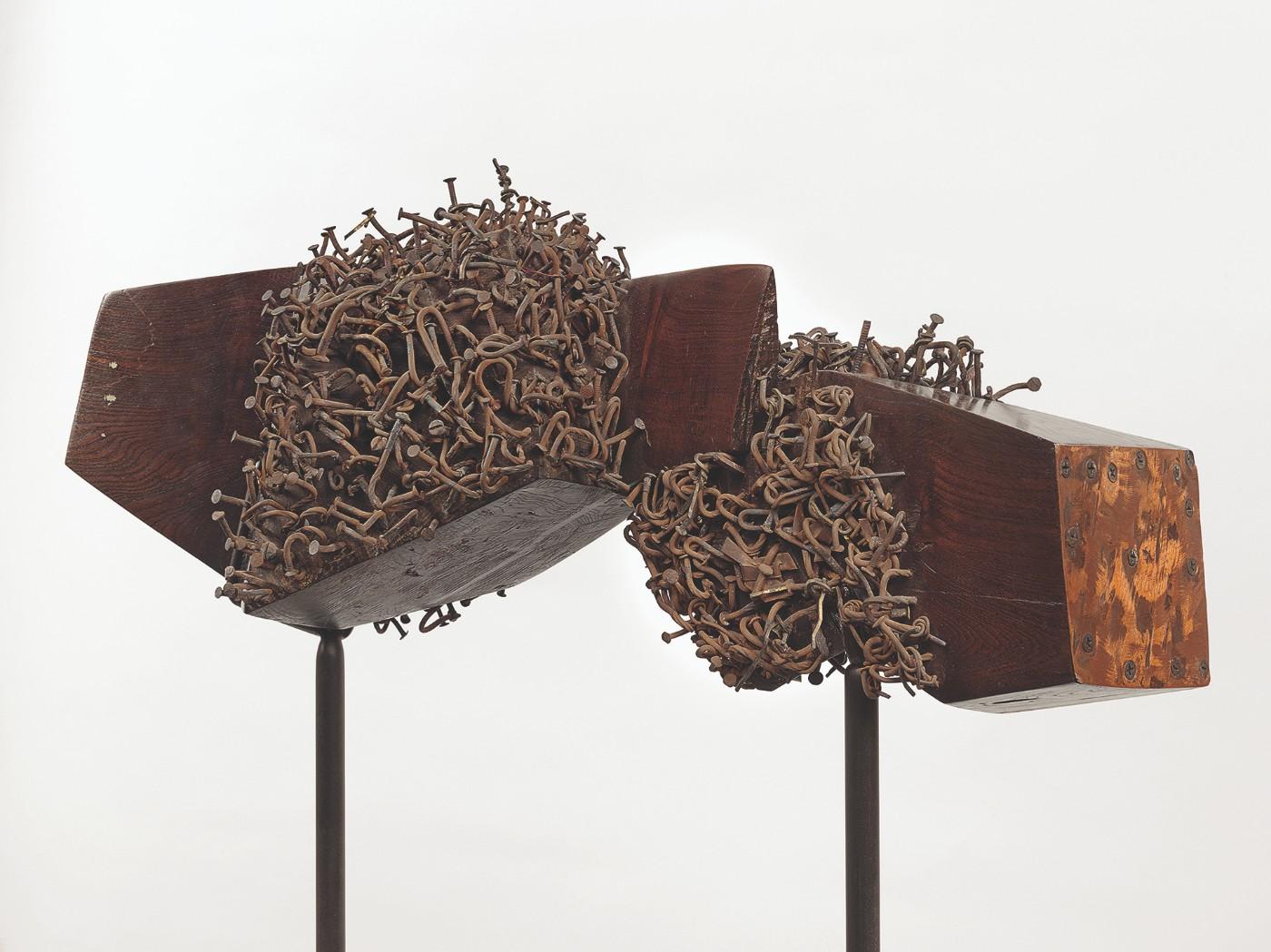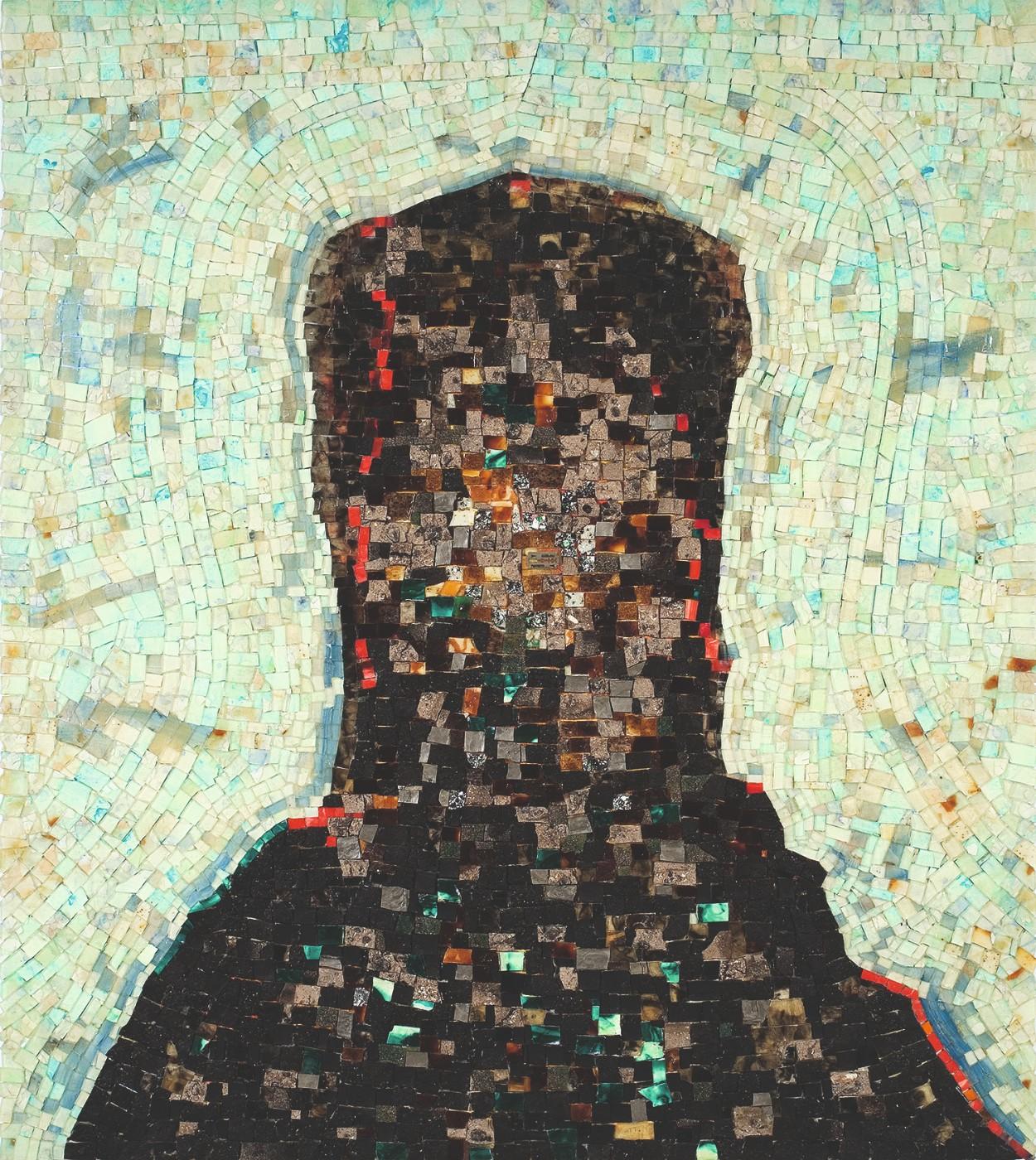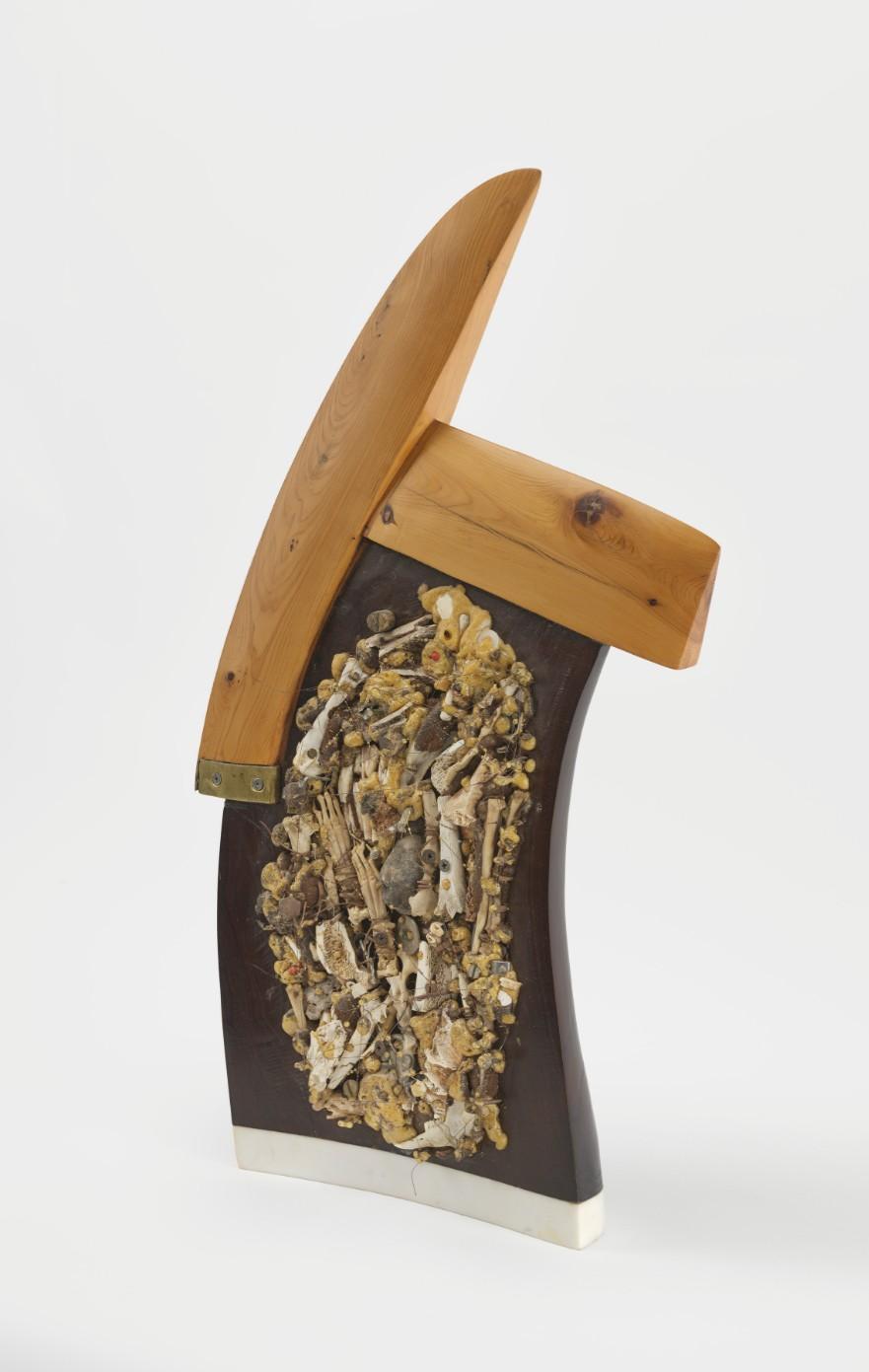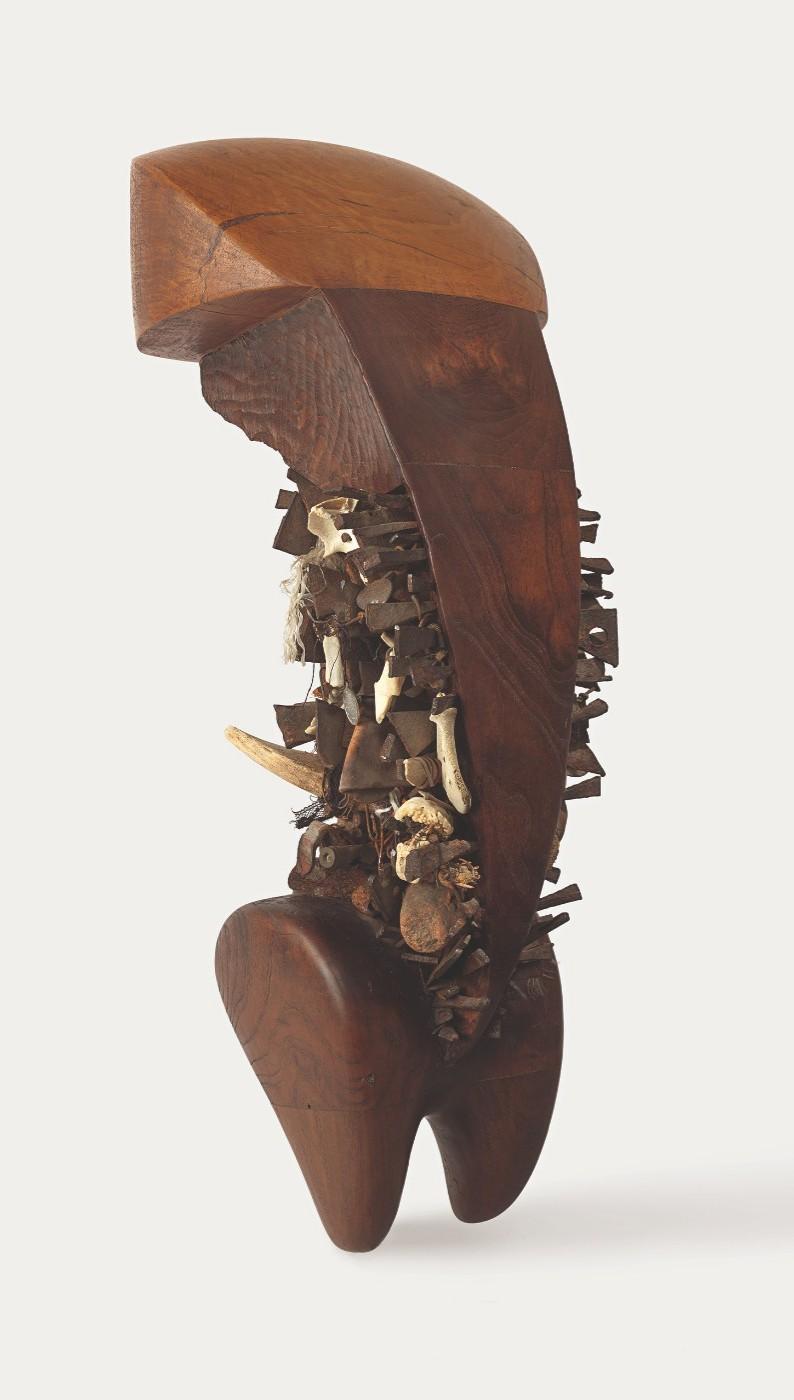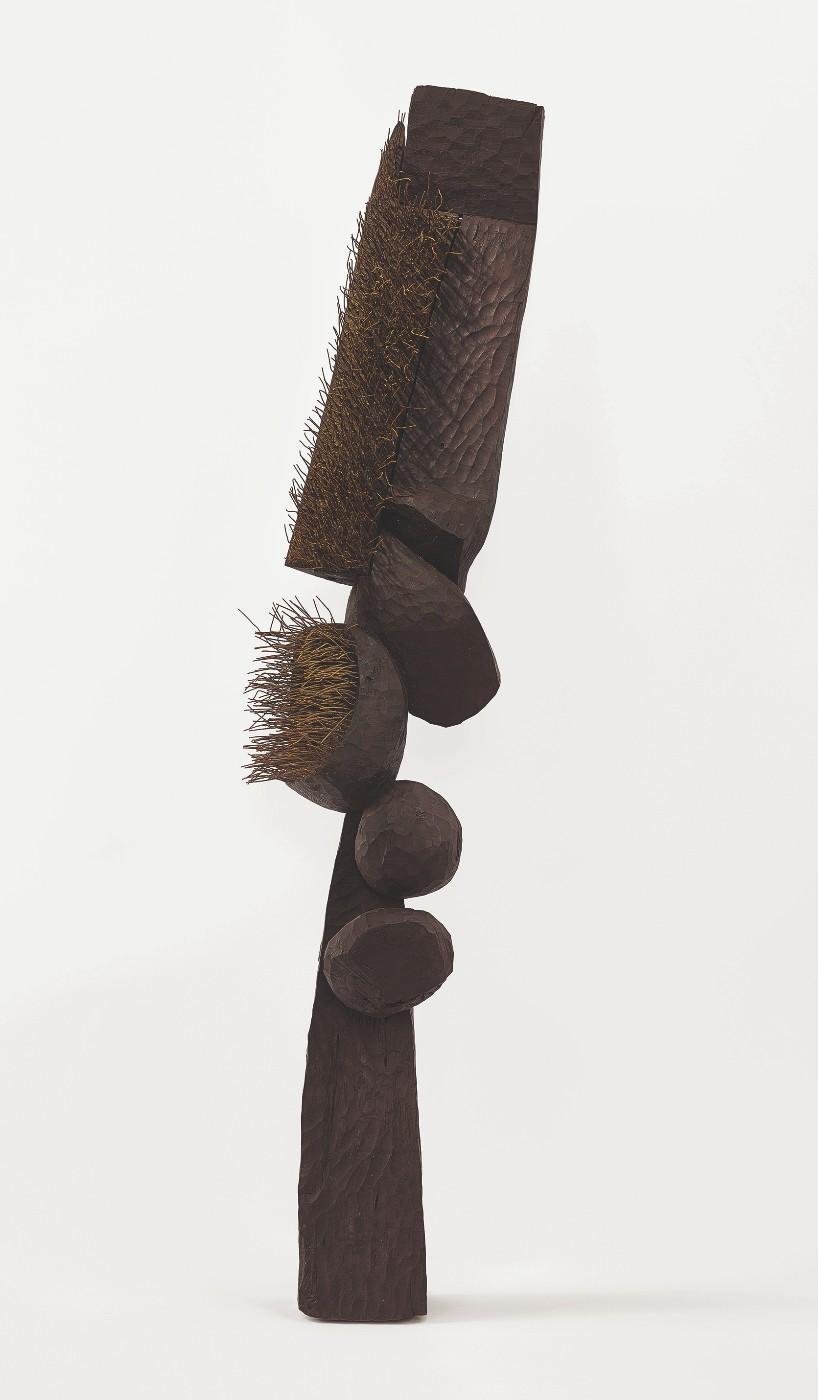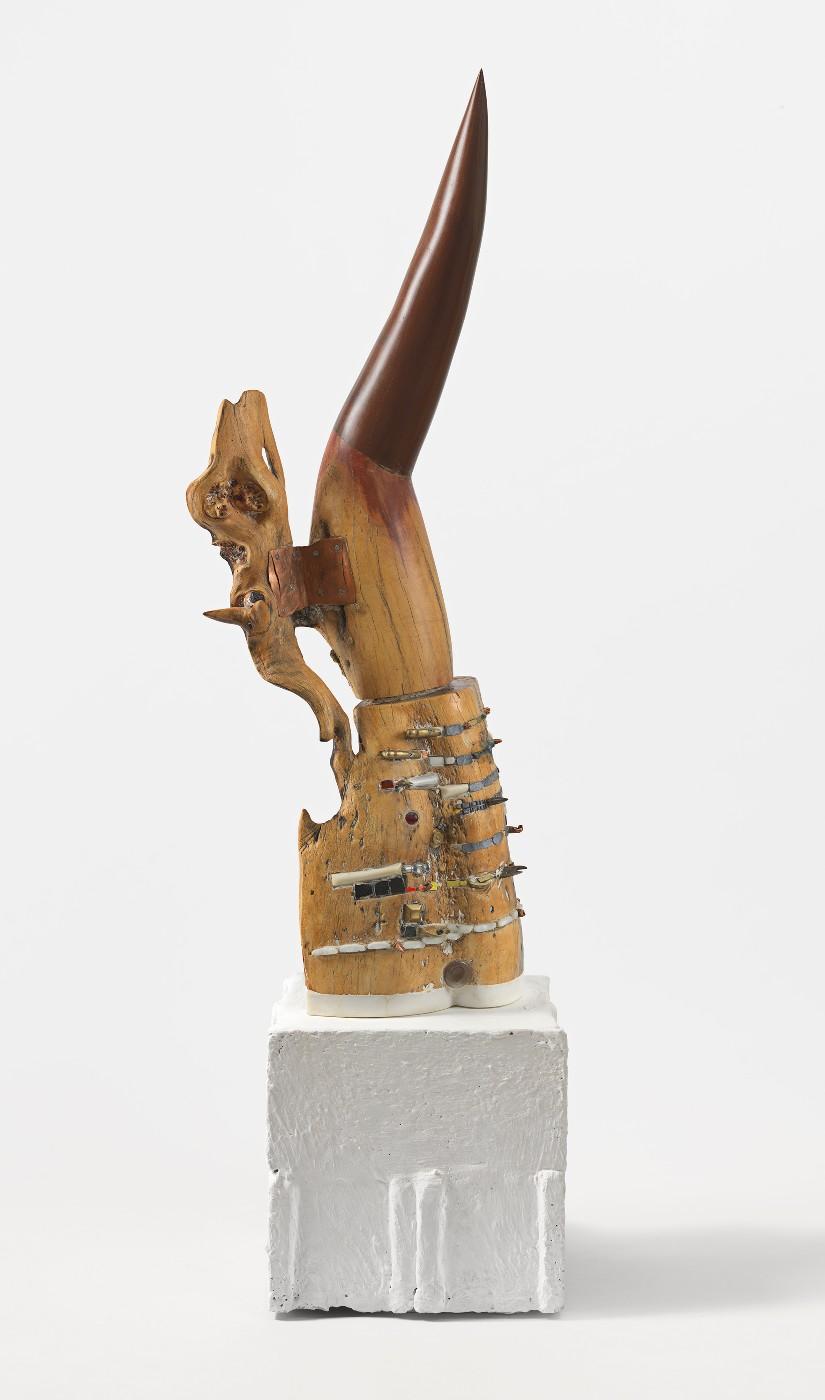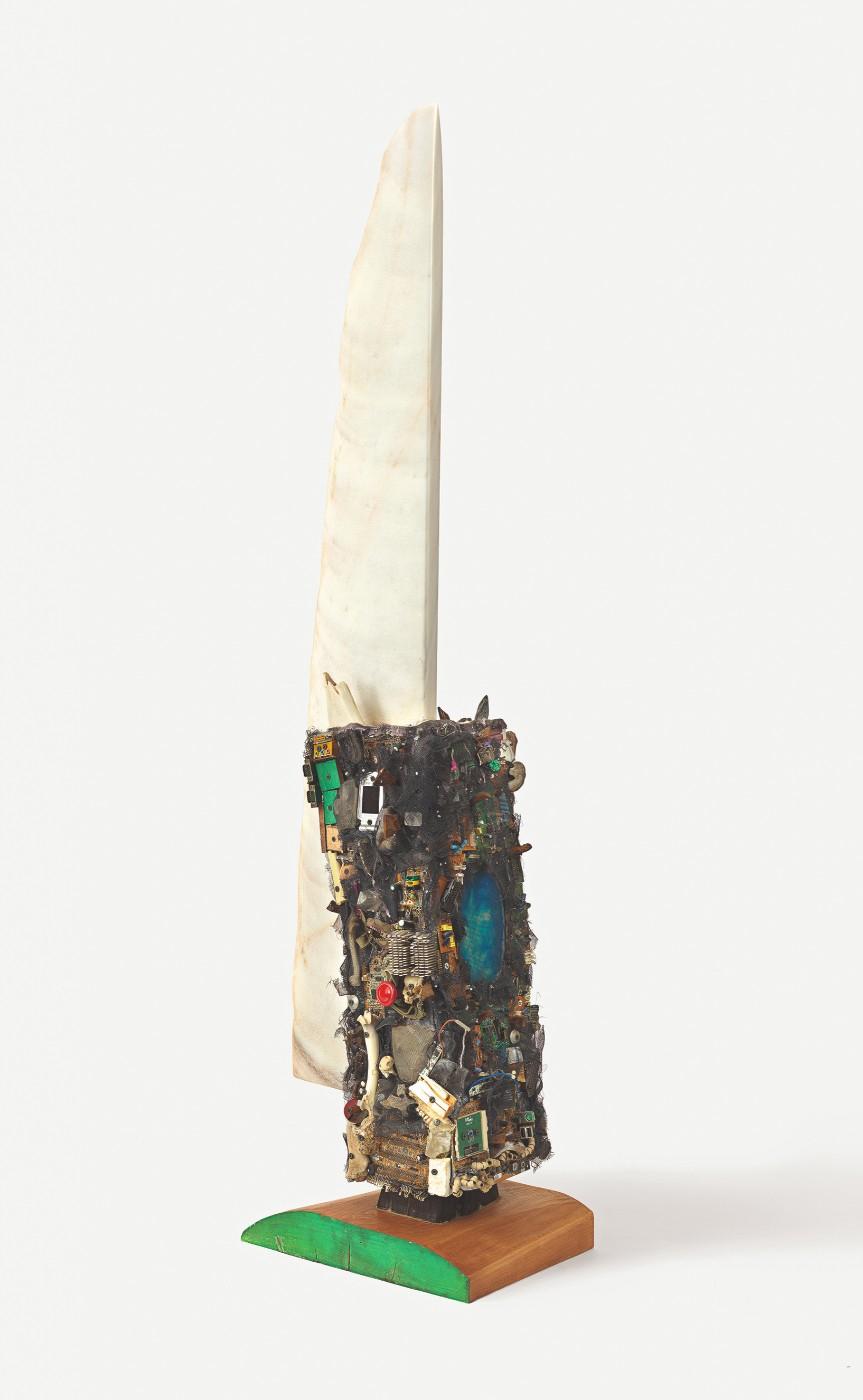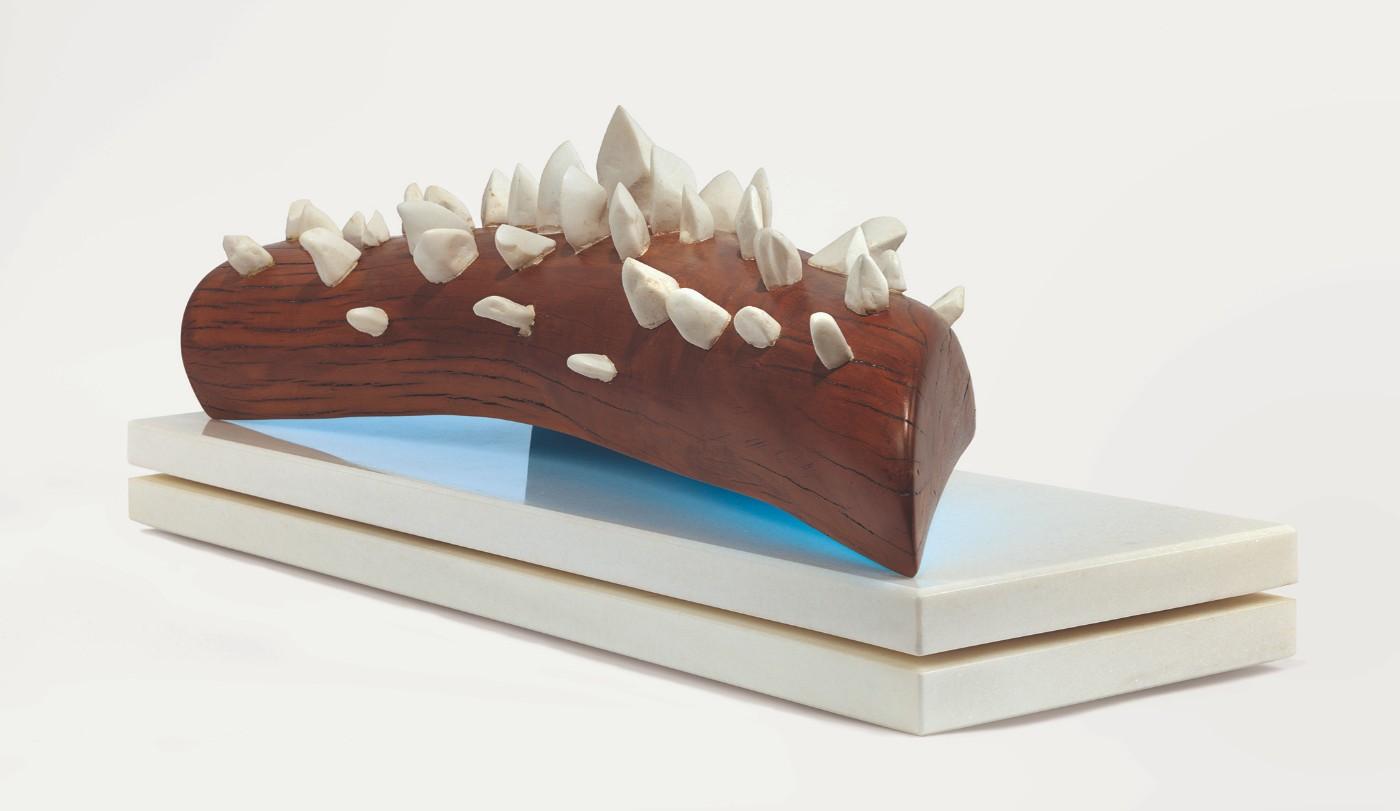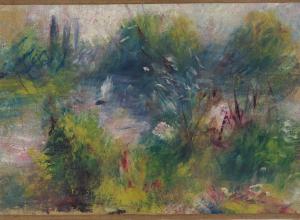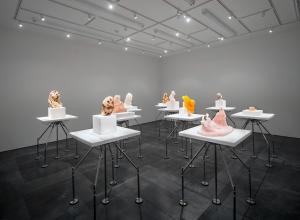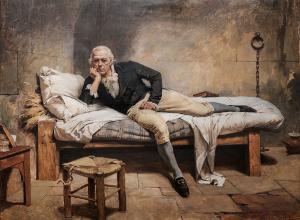An extensive exhibition at the Met Breuer, Odyssey: Jack Whitten Sculpture 1963–2017 introduces viewers to the acclaimed painter’s previously unknown sculpture. A groundbreaking innovator in abstract painting, Whitten also created striking sculpture utilizing wood, nails, fish bones, and other materials. Odyssey is the first New York City exhibition to cover Whitten’s entire and full career. Featuring 40 sculptures and 18 of his most notable paintings, the exhibition includes Whitten’s complete Black Monolith series (1988–2017), displayed together for the first time. The series is named for a black rocky outcropping outside his studio in Crete, where he and his family spent summers since 1969. These mosaic-like paintings, assembled from chips of acrylic paint and found objects, memorialize important African American innovators.
Whitten was very concerned with our environmental, technological and political future, and crafted his work to both honor the past and imagine a hopeful future. His sculptures are a potent combination of African and European art and artifacts. Created over the past five decades during his summers on Crete, they merge Grecian and African mythology with ritualistic tribal objects, European sculpture and modernist sensibility. His wooden forms adorned with cell phone parts, chip cards, remote controls, and digital detritus, merge past and present. The ritualistic feel of the pieces hints at the transformative power of art. Whitten firmly believed art could open our consciousness to new possibilities, helping us save ourselves from the coming crisis.




